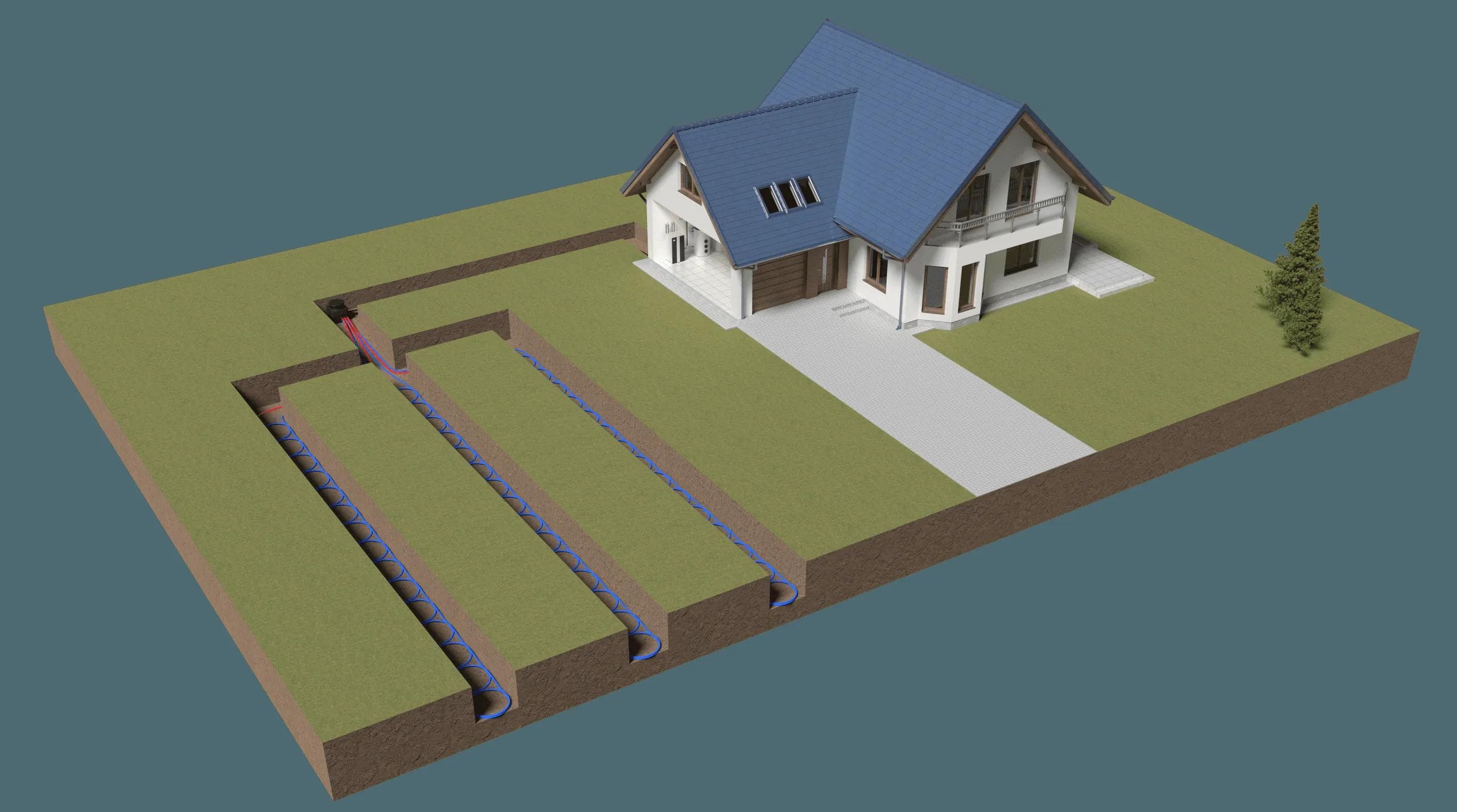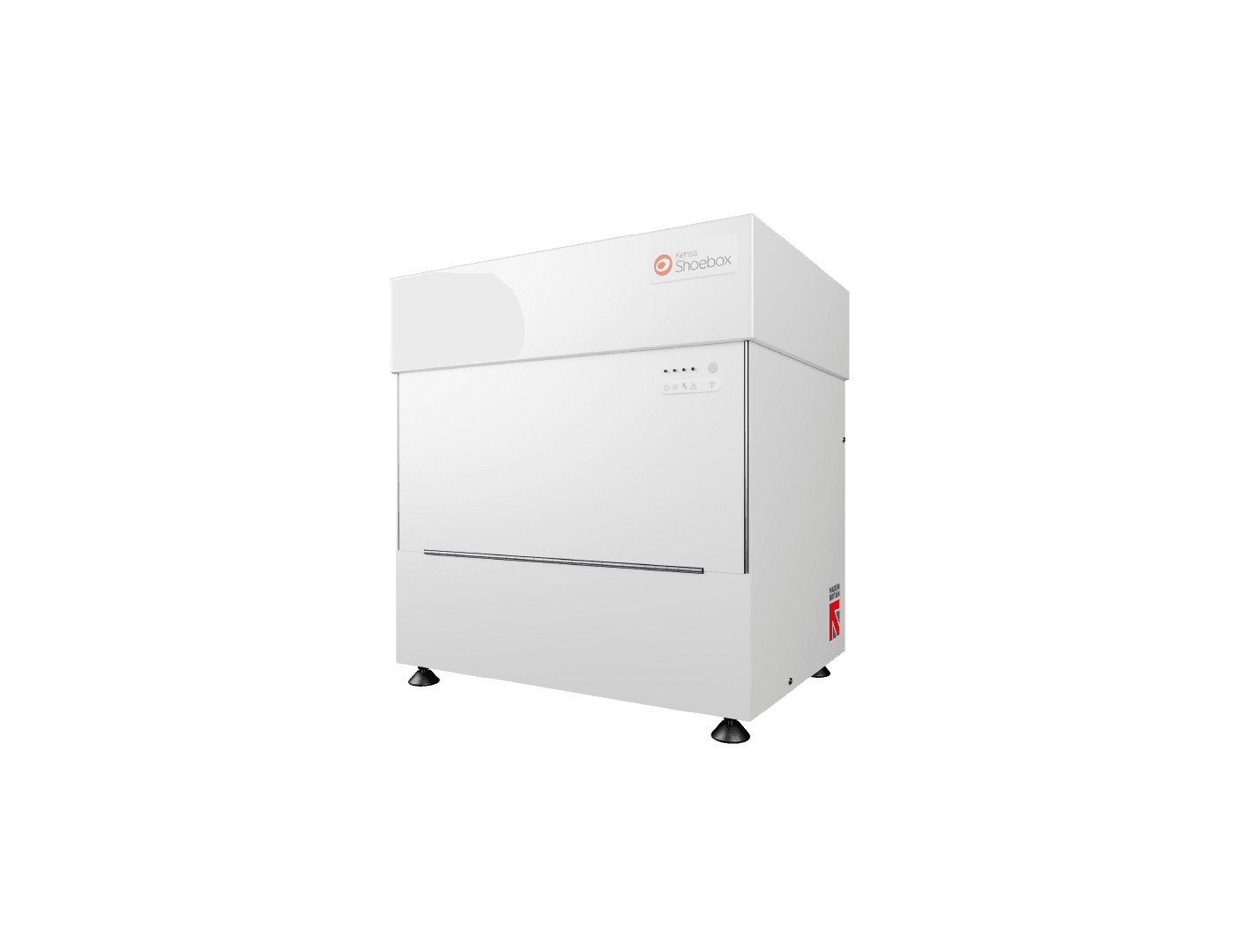Fountainbridge, Edinburgh
- LocationEdinburgh
- Completion DateJul 2024
Kensa’s networked heat pump solution ensured that 14 new homes created by Lar Housing Trust in the Fountainbridge area of central Edinburgh have a reliable, renewable heat source.
The housing charity commissioned Kensa to install  What is a Ground Source Heat Pump?Ground Source Heat Pumpsground source heat pumps connected to a shared ground array of boreholes.
What is a Ground Source Heat Pump?Ground Source Heat Pumpsground source heat pumps connected to a shared ground array of boreholes.
Kensa has a long track record of successfully working with housing providers to deliver Networked Heat Pump solutions to tackle fuel poverty and lower carbon emissions. Before this project, Kensa had been working with Lar Housing Trust to assess some of their projects for potential renewable heating schemes. Lar then appointed Kensa to manage the installation of a ground source heat pump system at the Fountainbridge site.
Lar Housing Trust was set up in 2015 to provide affordable rented homes across Scotland. The charity acquired the Fountainbridge site, adjacent to the Union Canal, which was home to St Kentigern’s Church built at the turn of the twentieth century.
The old church was abandoned and derelict, so Lar converted it into 4-bedroom townhouses. They also constructed a new-build block on the other side of the site containing 1-2 bedroom apartments to provide additional accommodation for the people of Edinburgh. The development is therefore an interesting mix of retrofit and newbuild properties with a focus on maintaining high standards of construction, insulation and energy efficiency.
There was no gas on site and Lar was looking at installing renewable heating into its properties where possible. Initially, air source heat pumps were considered, however with a lack of space on site, the units would have needed to be mounted on the roof of the newbuild block, causing visual obstruction and also making maintenance difficult. Ground source heat pumps were specified as a low-running cost, low-carbon alternative. They are visually unobtrusive, with units installed neatly in the dwellings and boreholes drilled down to 150m underground accessing renewable energy.
The new building needed to align with the look and feel of the adjacent church and the neighbouring Victorian properties. This created challenges in the project, for example, the building design called for sandstone facing blocks with a lime mortar bed and Lar needed to find skilled brickwork contractors able to take on work with these unusual materials.
Scotland is committed to delivering its net zero targets and supporting people with the rising cost of living. In 2022, the Scottish Government made available £16.2 million in funding for five zero-emission heat networks that will cut carbon emissions in homes and commercial properties. Lar Housing Trust was one of the recipients and awarded £128,000 to work with Kensa to install Networked Heat Pumps to provide low-carbon heating at the development in Fountainbridge.
To provide the 14 new homes with a reliable renewable heat source, 6 x boreholes were drilled vertically under the ground surrounding the church. Drillers GeoDrill created 2 x shared ground arrays, linking 3 x boreholes on each array, forming heat networks connected to the Kensa heat pumps in each dwelling. This setup means residents have autonomy over their own heating and hot water, and no split billing or metering is required.
Shared ground arrays are perfect for multiple occupancy dwellings; diversification is the principle that the more heat pumps you have on the same shared ground array, the likelihood of each heat pump having to operate at its peak load substantially reduces, which reduces the design load of the system, requiring shallower boreholes and therefore saving money on installation costs.
Further costs could be saved on future projects by utilising Kensa’s funded array offer which enables housebuilders and developers to install ground source heat pumps for the price of air source.
Kensa manages projects end to end, and can fund, own and maintain the shared ground array on site, leaving the customer responsible for only providing the heat pump and internal distribution system. Each property will pay a monthly standing charge to access the shared ground array for a minimum of 40 years, just like any traditional utility.
Iain Carr, Director of Sales for Kensa, said:
We are encouraging more housing developers to consider ground source heat pumps to make sure their developments are low carbon and affordable to heat. From January 2025, all new build homes in Scotland will have to meet new standards of energy efficiency under a Scottish version of Passivhaus.
Over the lifecycle, ground source heat pumps are proven to be the lowest cost and lowest carbon heating method. With Kensa’s funded offer where the ground array infrastructure is independently owned, ground source heat pumps can be installed for the same cost as air source, but with more benefits.
Kensa installed a mixture of compact and efficient 3kW and 6kW Kensa  ShoeboxProductShoebox heat pumps into the apartments and townhouses in cupboards and under the stairs. The heat pumps are also integrated with Sunamp heat batteries, manufactured in East Lothian. The space-saving combination of the Shoeboxes and heat batteries is perfect for the apartments, as the Sunamp batteries are 4 x smaller than traditional hot water cylinders. It also allows all the properties to take advantage of flexible tariffs by producing and storing heat when electricity is the cheapest.
ShoeboxProductShoebox heat pumps into the apartments and townhouses in cupboards and under the stairs. The heat pumps are also integrated with Sunamp heat batteries, manufactured in East Lothian. The space-saving combination of the Shoeboxes and heat batteries is perfect for the apartments, as the Sunamp batteries are 4 x smaller than traditional hot water cylinders. It also allows all the properties to take advantage of flexible tariffs by producing and storing heat when electricity is the cheapest.
Access and space constraints were also issues for the installation of the groundworks on this project. The site was tight and accessed through a small historic lane with a stone opening – large drill rigs, skips, coils and pipes had to carefully pass through this.
Following a successful installation, the site has been visited by members of the Scottish government, national and local politicians as an example of how networked heat pumps can be successfully installed not just in new build, but also retrofitted buildings, such as the conversion of St Kentigern’s church.
Stuart McLaren, Development Director at Lar Housing Trust, said:
We are pleased to have incorporated innovative renewable heating technologies into this development to provide efficient, affordable low carbon heating. The redevelopment of St Kentigern’s Church was a great opportunity to bring purpose back to the site that had long been derelict and provide good quality. mid-market rental homes in a sought-after central Edinburgh location. As a charity, we place great value on the fact that these homes will allow people to live affordably in their own communities, offering security, stability and a chance to plan for the future.